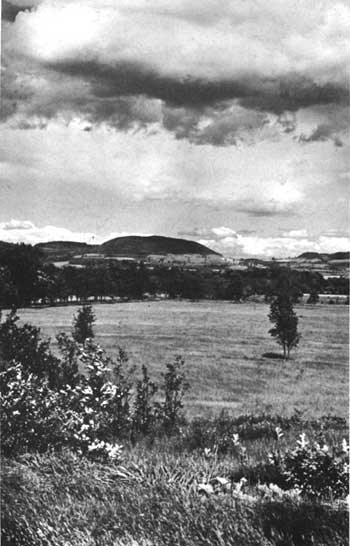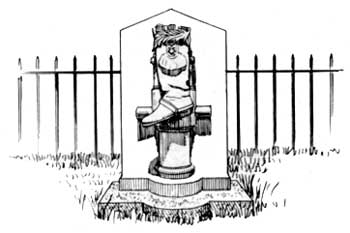|
SARATOGA National Historical Park |
 |

Looking east from the site of the Balcarres
Redoubt. The immediate foreground was the scene of desperate fighting in
both battles of Saratoga. Scouts signaled the movements of Burgoyne's
army from Willard Mountain in the left distance.
Courtesy Life
Magazine.
FEW BATTLES in world history have had a more stirring climax than Saratoga and probably none have had more far-reaching consequences. Here, a ragged but inspired rebel army convincingly demonstrated its ability to rise to brilliant victory after absorbing staggering blows. In dramatic fashion Saratoga not only rescued the colonists from almost certain defeat, but also pointed significantly to the fate which likely would befall any enemy force penetrating into the interior of America and operating independently of the sea.
Abroad, the battles served immeasurably to increase the military prestige of American arms, while at home they greatly strengthened the fighting morale and discouraged loyalist opposition. In their broad aspects the two battles of Saratoga may be considered to mark definitely the turning point of the American Revolution in that the result brought to the cause of the hard-pressed colonists the assistance of France, Spain, and Holland, thereby greatly increasing the probability of eventually winning independence. To a hesitant, vacillating France awaiting the opportune moment to strike a telling blow at the British, Saratoga brought the decision for intervention—a decision which previous diplomatic negotiations had been unable to obtain. The active entrance of France into the war in June 1778, provided the financial, military, and naval support without which the American cause would have been practically hopeless. Though three more years of fighting were necessary in order to bring ultimate victory at Yorktown, Saratoga furnished the physical and psychological impetus which brightened a desperate cause at a moment when failure would have been disastrous. Without the success of American arms at Saratoga, it is difficult to see how the struggle could long have been continued.
Writing of the significance of Saratoga, Sir Edward Creasy, the eminent English historian, said: "Nor can any military event be said to have exercised more important influence upon the future fortunes of mankind, than the complete defeat of Burgoyne's expedition in 1777; a defeat which rescued the revolted colonists from certain subjection; and which, by inducing the Courts of France and Spain to attack England in their behalf, insured the independence of the United States, and the formation of that transatlantic power which not only America, but both Europe and Asia, now see and feel."
A contemporary of the event said of it, "Rebellion which a twelve-month ago was a contemptible pygmy, is now in appearance a giant." Saratoga truly must be considered as one of the cornerstones of American liberty and as one of those momentous events which shape the destiny of nations. Even in the light of the nearly two centuries that have elapsed, the significance of this epochal victory is difficult to appraise fully.


|
|
Last Modified: Mon, Dec 2 2002 10:00:00 am PDT |


